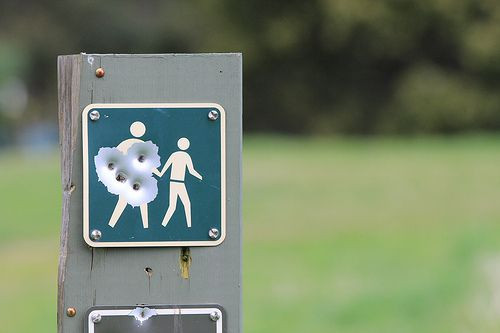Gun Ownership Tied To Increased Homicide Rates In Largest Firearm Violence Study To Date

In the wake of the Sandy Hook Elementary School shooting last December, which took the lives of 20 children and seven adults, the scars left from Columbine, Virginia Tech, and Aurora have been forcefully reopened and made the subject of a national debate on gun ownership. Now, the first study released since the Sandy Hook tragedy, and the largest ever to be conducted on firearm violence, has found a “robust correlation” between a state’s rate of gun ownership and its homicide rates.
Covering 30 years, between 1981 and 2010, in all 50 states, the study is the most comprehensive to date and controls for a raft of variables normally associated with homicides. For each one-percentage point increase in the prevalence of gun ownership, the state’s homicide rate increased by .9 percent, the authors found, ultimately leading them to similar conclusions found by prior studies on gun ownership and homicides.
Timeliness In The Aftermath Of Tragedy
Such studies are critical to the national discourse because they better inform both conversation and legislation. Lawmakers, lobbyists, and politicians at all levels stand to gain from better understanding the relationship between firearms and homicide, especially in a country where the prevalence of gun-related deaths outpaces every other country on the planet. In the United States alone, the number of gun deaths since the Sandy Hook massacre has already exceeded the total number of military casualties during the nine-year Iraq war.
"Understanding the relationship between the prevalence of gun ownership and therefore the availability of guns, and firearm-related mortality is critical to guiding decisions regarding recently proposed measures to address firearm violence," said the study's authors.
Researchers led by Dr. Michael Siegel, professor of community health sciences at the Boston University School of Public Health, took their 30-year data from the Centers for Disease Control and Prevention’s (CDC) Web-Based Injury Statistics Query and Reporting System (WISQARS) database.
Gun ownership is harder to measure than homicide rates, specifically because no formal state-level survey compiles data on gun ownership. To compensate, the researchers used an oft-employed proxy as a stand-in: the number of suicides committed using a firearm. According to the authors, the proxy correlates highly with rates of gun ownership.
To control for homicide rates, the team isolated a total of 16 associated variables. These included age, gender, race/ethnicity, urbanization, poverty, unemployment, income, education, divorce rate, alcohol use, violent crime rate, nonviolent crime rate, number of hunting licenses, age-adjusted non-firearm homicide rate, incarceration rate, and suicide rate.
After analyzing the CDC’s data according to their regression models, researchers found that for every percentage point increase in gun ownership prevalence, the homicide rate rises by .9 percent. For each standard deviation increase in gun ownership, the homicide rate jumps by 12.9 percent; or in other words, in a state such as Mississippi, where the gun ownership rate is 77 percent, decreasing it to the national average of 58 percent would lower the state’s homicide rate by 17 percent.
Further Discussion And Possibilities
These decreases aren’t mean to imply causation, the researchers noted. In theory, even controlling for all 16 variables, the team acknowledges the possibility of greater homicide rates influencing purchasing decisions for firearms, thus raising the ownership rate because of homicide, not the other way around as so many have claimed.
Still, the relationship between the two rates demands scrutiny if the appropriate regulations on gun ownership are to be set, such as requiring background checks on all firearm purchases or outright bans on certain semi-automatic assault weapons.
"In the wake of the tragic shooting in Newtown, Connecticut, last year, many states are considering legislation to control firearm-related deaths,” said Siegel, whose team recognized that its work drew in part from the National Rifle Association’s persistent claims that gun ownership doesn’t lead to gun violence.
Rates of gun ownership tend to fluctuate rather predictably depending on the state’s geography. Southern states and those nestled in the middle of the country often see greater prevalence, while states up north and to the west put up lower percentages. Mississippi features the greatest proportion of gun owners, at 76.8 percent, while roughly a quarter of all Hawaiians own a firearm, at 25.8 percent.
The mean age-adjusted firearm homicide rate ranged from New Hampshire’s low of 0.9 per 100,000 people to a high of 10.8 per 100,000 in Louisiana over the 30 years. For all states, the average firearm homicide rate decreased from 5.2 per 100,000 in 1981 to 3.5 per 100,000 in 2010, the press release states.
“This research is the strongest to date to document that states with higher levels of gun ownership have disproportionately large numbers of deaths from firearm-related homicides,” said Siegel. “It suggests that measures which succeed in decreasing the overall prevalence of guns will lower firearm homicide rates.”



























